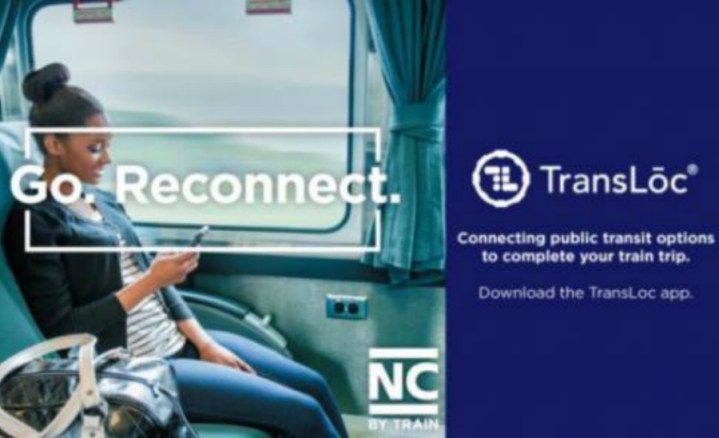
The DOT program uses Durham-based TransLoc’s Rider app to help riders going to and from nine Amtrak stations in the state connect with local public transit and with Uber. According to the NC DOT, this program is the first “transit tech” agreement by a state agency in the U.S. TransLoc previously launched programs with Uber and GoTriangle, North Carolina’s Research Triangle Regional Public Transportation Authority, located in the center of the state, and with Uber and local bus services in Gainesville, Florida.
To use the free Rider app, travelers enter their preferred train station. The app will then show multimodal route options from the rider’s location to the station, including integrating Uber and public transit with the current train schedule. “For example, the app might provide a synchronized route to the train that incorporates walking, taking a bus or riding in an Uber. Riders can also use the app to find transit options or an Uber at their destination,” according to the DOT.
“Our partnership with TransLoc is helping us create a large network of interconnected public transit options,” said NCDOT Rail Division Director Paul Worley. “By tying together services that residents use and depend on already, it’s now easier than ever for North Carolinians to travel across the state without driving their cars while taking advantage of existing rail infrastructure.”
According to the DOT and TransLoc, the app “will learn user preferences around cost, convenience, and mode of transportation to deliver a customized door-to-door plan for worry-free transit.”
As Transportation as a Service (TaaS) and Mobility as a Service (MaaS) develop around the country, we’re sure to see many such interconnections between transportation options all accessible on ubiquitous mobile devices.


